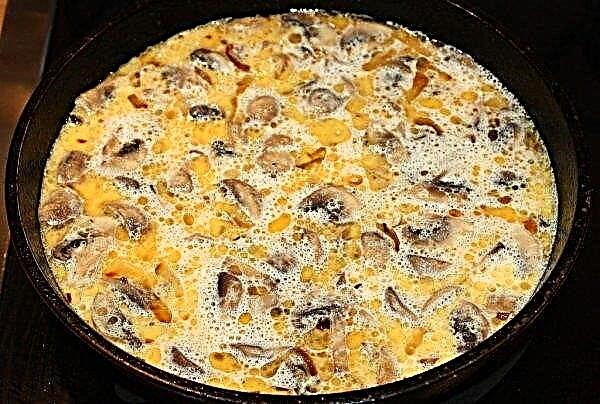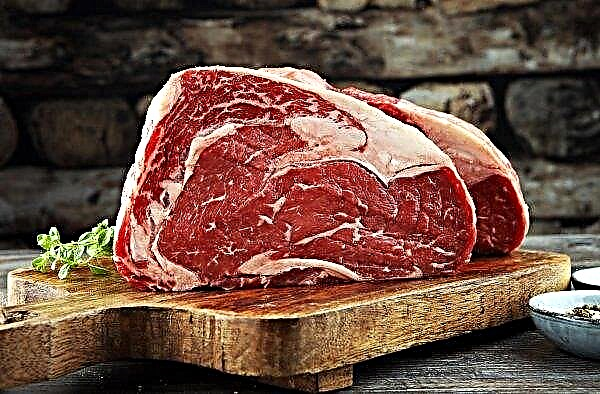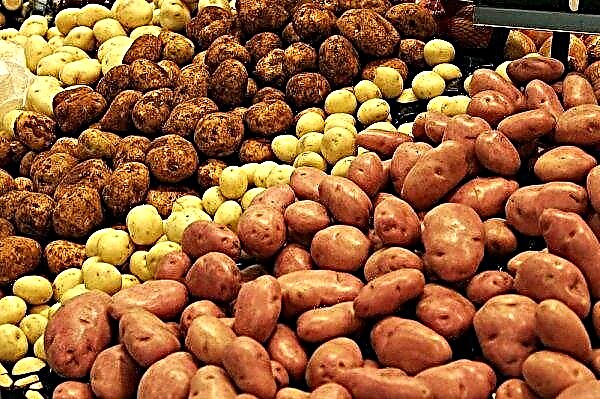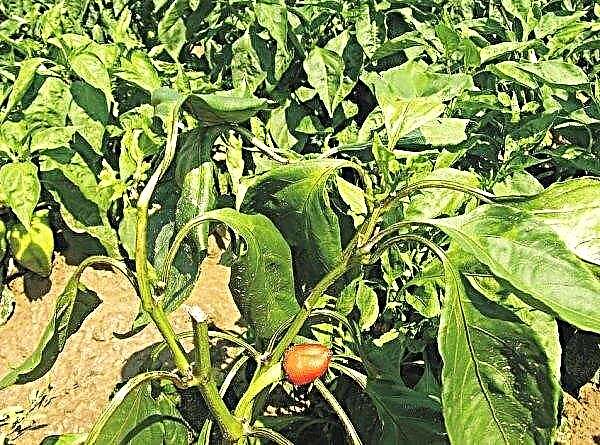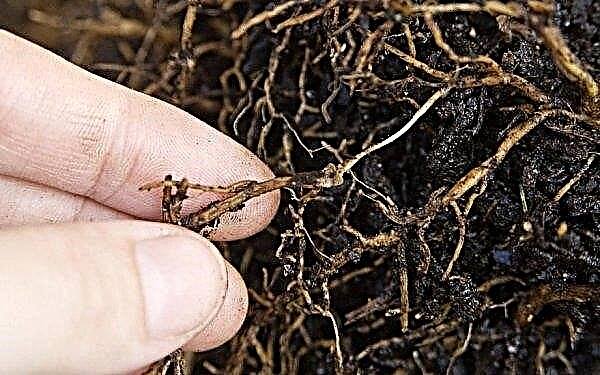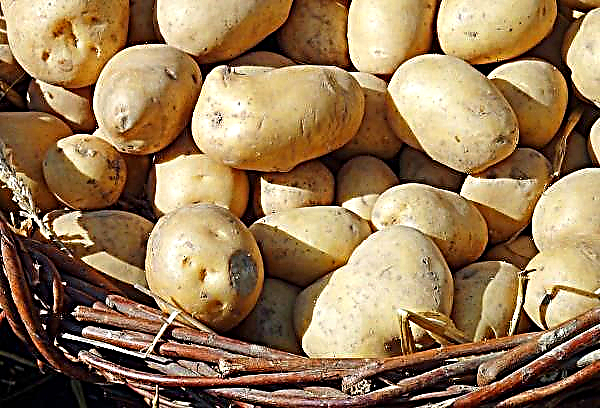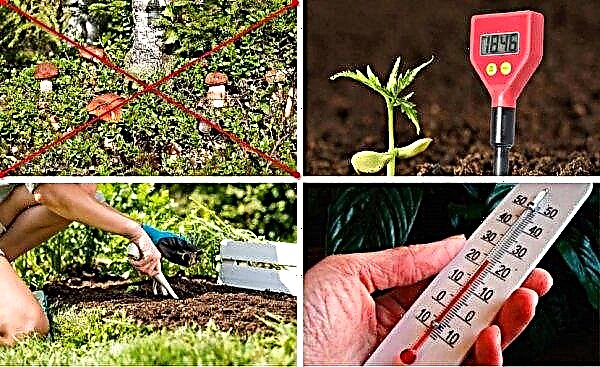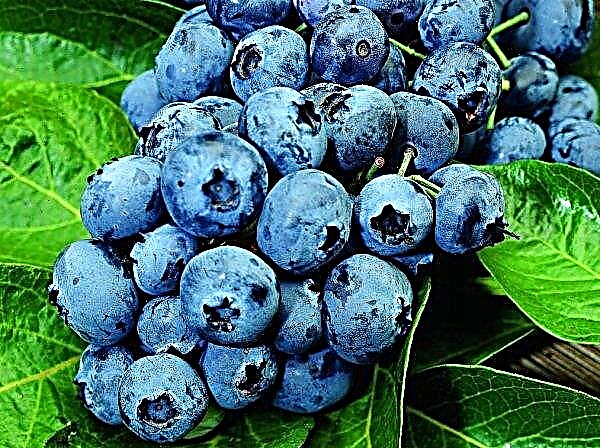Potato Elizabeth, despite its long origin, is still considered one of the most beloved varieties for growing in domestic gardeners. Its root vegetables have dazzling white flesh, excellent taste and have an aesthetically attractive presentation. What are the features of agricultural technology for growing vegetables, and how to properly care for them, let's figure it out.
Variety Breeding History
Variety Elizaveta is a long-standing representative of Russian selection, bred by scientists of the Leningrad Scientific Research Institute in conjunction with employees of the Volga selection station. The biological basis of this seven-species hybrid was S.vernei, S.phureja, S.acaule, S.demissum, S. stoloniferum, S.andigenum, and S. tuberosum. In 1996, potatoes were added to the Russian state registry as a mid-early, table vegetable, recommended for cultivation in the Northern, Central, Western regions, the North Caucasus and the Far Eastern regions of the state.
Did you know? Lebanese farmer Khalil Semkhat managed to grow the largest vegetable tuber. The weight of the root crop was 11.2 kg.
Description and characteristic
Potato Lisa is a table variety with an average growing season, the fruits of which are ready for harvesting 80–90 days after planting. During ripening, the plant forms erect, slightly branched, medium-sized, neat bushes on which abundant greenery grows in the form of rather large, with a wavy edge, slightly dissected green leaves. During flowering, the culture forms a small number of white flowers that quickly crumble and do not form berries.
The culture has a well-developed root system. Potato root crops are large, uniform, oval-round in shape with a small number of eyes on the surface, weighing from 80 to 150 g. The root skin is thin, smooth structure, pale beige color. The pulp is white, does not blacken at the cut, while cooking, it retains its structure perfectly. The presence of starch varies between 13–18%.
Tubers have an excellent commercial appearance, therefore, they are often used for implementation on an industrial scale. The potato is distinguished by its high keeping quality, is well transported, does not rot, is able to maintain its aesthetic and taste qualities until next spring.
The yield of the variety is quite high, from one hectare on average you can get 150-400 c. Under favorable climate conditions, potatoes are able to please a crop of up to 500 c. Under one bush, up to 10 selected tubers ripen per season, while the number of small, substandard fruits is minimal. Queen Elizabeth does not degenerate, does not require updating, material for planting can be procured independently.Did you know? In the world there are about 7,000 varieties of potatoes. There is a special international potato center located in the city of Lima (Peru), the purpose of which is to collect all existing varieties of culture.
Advantages and disadvantages of selection
- Potato Elizabeth is characterized by a number of key advantages:
- good yields;
- excellent marketability and taste of the fruit;
- excellent keeping quality and transportability;
- simplicity and undemanding in growing;
- good immunity to many diseases affecting potatoes.
Planting potatoes
It is possible to achieve good fertility of potatoes, given the main rules of agricultural technology for planting root crops.
Soil requirements
Tuber planting activities begin in the second half of May, when the soil warms up well to a depth of 10 cm, and daytime temperature readings are kept at a stable level of + 15 ° С.
Important! Potatoes are characterized by resistance to mild cooling, however, severe or prolonged freezing will be fatal for him.
Despite the fact that the variety is not too picky about planting conditions, it prefers light, cultivated, woody-podzolic, sandy loamy soils. Planting of crops on clay and heavy soils is allowed, however, in such cases, it is recommended to enrich the land and lighten by applying sand, peat, compost, humus or wood ash. To prevent the development of various ailments and pests, the soil is treated with special disinfectant compounds.
Preparing planting material
Before planting potatoes should take care of the preparation of planting material. Tubers are recommended to germinate and sanitize. In the first case, the fruits a few days (7-10) before planting, it is necessary to arrange in a warm place and wait for the emergence of sprouts, 3-4 cm long. In the second case, the root crops should be treated with special preparations or soaked for 30 minutes in a weak solution of permanganate dry potassium. Such treatment will protect the crop from pests, and increase the plant's immunity to various diseases.
Tubers of medium size, weighing 80–90 g, without the presence of mechanical damage, rot, signs of disease, are perfect as seed material.
Landing technology
The technology for planting potatoes Elizabeth is practically no different from planting crops of other varieties.
It is built on the following steps:
- Dig a hole with a shovel, at a distance from each other of about 35–40 cm;
- fertilizer, for example, humus and wood ash;
- in the pit, sprout tubers up;
- to fill up the planted root crops with soil.
Important! It is not recommended to cut the seed in half, as this leads to a decrease in yield.
Features of care and fertilizer
One of the main advantages of the variety is its unpretentiousness in cultivation. However, to obtain abundant crops, he should provide traditional care, which consists of regular moisture, fertilizing, loosening the soil, and hilling.
Weed cleaning
The basic rules of agricultural technology for plant care require the mandatory implementation of a number of measures that contribute to the full development of culture and a high yield:
- Loosening. After each watering, the procedure of loosening the soil should be carried out, going deeper by 3-4 cm. This procedure allows you to saturate the soil with oxygen and nutrient components, thereby activating the development of tubers.
- Hilling. Hilling is considered an obligatory measure when caring for a vegetable, which needs to be done three times during the season: when seedlings reach a height of 8–10 cm, then two weeks after the first and the last, when the stem height reaches 20–25 cm. so that the widest and highest crest is formed.
- Weed weeding. Regularly, as necessary, weeds should be removed from the soil, which take away nutrients and moisture from the root system of the plant. It is especially important to weed before flowering weeds.
- Mulching. Laying a layer of natural mulch on the soil prevents the evaporation of moisture and creates favorable conditions for the development of root crops. For mulching, straw, hay, sawdust or mowed grass located between rows of potatoes can be used.

Watering
Elizabeth prefers regular but dosed watering. It reacts equally negatively to both excessive moisture and lack of moisture. The first irrigation measures are carried out immediately after planting root crops. The second watering is carried out when the sprouts reach a height of 5–10 cm. Further, the amount of moisture will depend on weather conditions: in hot, dry weather, it is recommended to water the bushes every 5 days, at normal temperatures - once every 10 days.
For hydration, suitable, cold, non-cold water, based on one plant at least 10-12 liters. To ensure that the culture receives the required amount of moisture, it is recommended to organize drip irrigation, which will allow the root system to develop correctly and fully.
Important! With excessive moisture, the soil near the bushes can be sprinkled with wood ash.
Potatoes respond well to top dressing, therefore, throughout the growing season, fertilizers should be applied at least three times: the first - during the planting of potatoes, the second - before the first hilling, the third - in the flowering phase. As top dressing, you can use organic products, for example, humus, manure or compost, as well as finished mineral complexes.
10 days before harvesting, it is recommended to make a single foliar top dressing of potatoes using a solution of superphosphate, which is sprayed with greens.
Pest and Disease Control
The Elizabeth variety has a fairly strong immune system and is able to withstand various ailments, in particular scab, potato cancer, black leg and nematode.
In some cases, non-compliance with the basic rules of agricultural technology can provoke a defeat:
- Fusarium. Symptoms of the disease are twisting and yellowing of the leaves, and their further decline. Also, in the process of the negative impact of the fungus, the root system suffers, as a result of which the root crops begin to rot. You can prevent crop loss from the disease by treating the soil and tubers with special preparations, for example, Quadris, Force, Maxim.
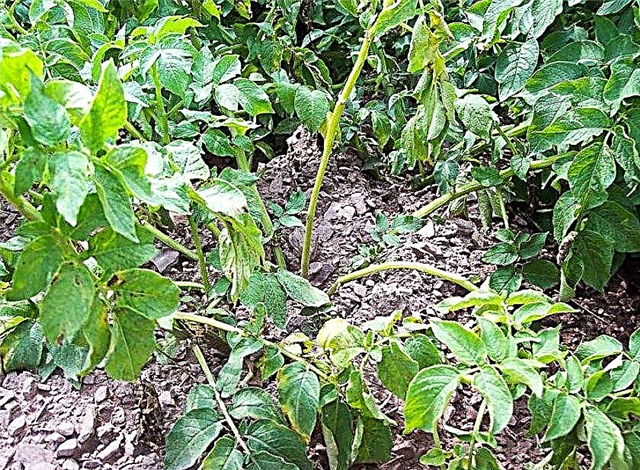
- Late blight. It is considered the most common disease with a high degree of risk, since it affects the entire plant: leaves, stems, flowers, root crops, root system. Brown spots form on the foliage, a white coating is visible. Gradually, the disease progresses and infects root crops. To protect potatoes from the disease, it is recommended to process planting material with fungicidal agents.
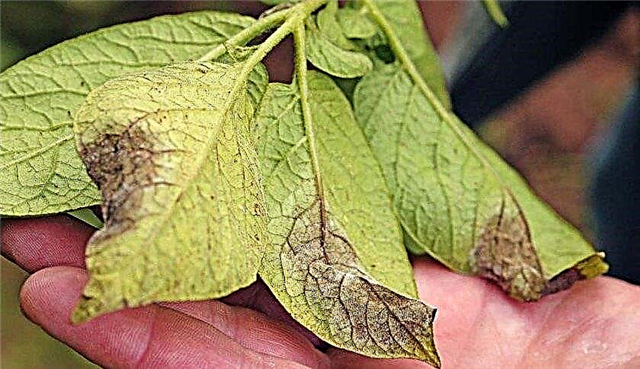
The main enemies of potatoes are considered Colorado beetle, which actively eats greens and root crops, and wireworm, affecting the fruits. Modern insecticides with a wide spectrum of action, as well as a number of preventive measures: soil decontamination, loosening, and weed removal help fight them. Compliance with pests also helps to comply with the basics of crop rotation.
Important! Blight spores are able to maintain their viability for four years, accumulate in the soil, and under favorable conditions for them, cause an “outbreak” of the disease.
Harvest recommendations
Harvesting of root crops starts 80–90 days after planting. In order for the potatoes to form large fruits, experts recommend that 10 days before harvesting, cut off the tops of the bushes from the bushes.
Excavation of potatoes is carried out on a warm, dry day. Harvested in boxes or bags, after allowing the tubers to dry a little under the sun. For storage, it is better to choose cool, dry, well-ventilated rooms, with stable temperature indicators + 4 ... + 7 ° С. Potatoes should be inspected regularly for damage, rot, infected areas. Poor root crops should be discarded and destroyed. The variety is distinguished by good keeping quality, and under proper conditions it is able to be stored until the next season, without loss of marketability and taste.
Did you know? In the Andes, a frost-resistant cultivar is grown, the fruits of which are able to withstand temperatures of –8°C. Moreover, the fruits do not grow in the ground, but above its surface in the form of small berries.
Elizabeth is an unpretentious variety of potatoes, which has been used for many decades by fame and demand among domestic agronomists. It allows, subject to the simplest rules of agricultural technology, to receive annually stable high yields of tasty, healthy and aesthetically attractive fruits.




